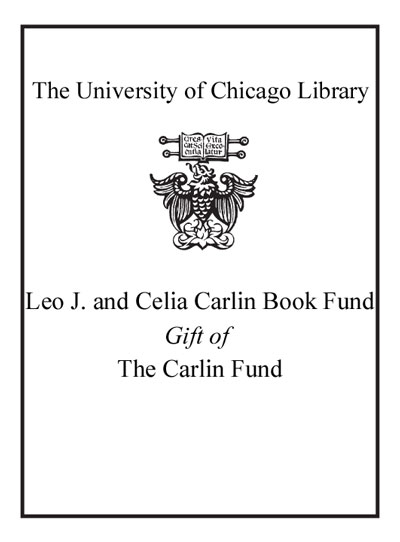Review by Booklist Review
Presumably, Joyce Carol Oates uses pseudonyms to distinguish her suspense novels from her literary works, although her identity is always revealed when she writes as Rosamond Smith or Lauren Kelly. And while this is designated as a novel of suspense, it is an archetypal Oatesian tale narrated by a lonely and depressed young woman of straitened circumstances and hidden strengths uncomfortable with her sexuality and enthralled by an unsavory mentor. Drewe Hildebrand--chic, wealthy, and reckless--runs an artists' colony not far from the old Hudson River town of Newburgh that impresses New York City sophisticates and scandalizes the conservative locals. Drewe has taken charge of her destitute niece, Annemarie, renaming her Marta and attempting to transform this shy and balky teen into a sexy sidekick, seemingly with deviant intent. Certainly, there is menace in the air when Drewe takes up with a sculptor who creates such ghoulish works as a bust of Drewe covered in her own blood. After a near-riot breaks out at the opening of an exhibit of his grotesque creations, Drewe disappears and Marta is beaten and forced to consume a nearly lethal dose of crystal meth. Ultimately, the suspense is more intellectual than visceral in this fleet-footed, culturally astute, and teasingly ambiguous tale about sexual power, women and body image, class divisions, contemporary art and the rejection of beauty, and the nexus of the sacred and the profane. Oates by any other name is still Oates: smart, canny, haunted, and compelling. --Donna Seaman Copyright 2006 Booklist
From Booklist, Copyright (c) American Library Association. Used with permission.
Review by Publisher's Weekly Review
Joyce Carol Oates's gripping third suspense novel under her Kelly pseudonym (after 2005's The Stolen Heart) explores twisted love. Shy, insecure teenager Annemarie Straube becomes the object of intense scrutiny when she's discovered half-clothed and drugged, wandering through the woods. She and her aunt, Drewe Hildebrand, were apparently abducted by fundamentalist Christians who vandalized the older woman's Hudson River estate. Under police questioning, Annemarie has only fragmentary memories of the attack and of being force-fed a powder later determined to be crystal meth. Through flashbacks, Kelly portrays the odd relationship between Annemarie and Drewe and the bizarre assortment of cutting-edge artists who were part of their circle and who eventually emerge as the main suspects in the kidnapping. Since the heroine is the very definition of the proverbial unreliable narrator, piecing together subtle psychological clues to discover the truth will challenge most readers. Fans of Minette Walters and Ruth Rendell will be well pleased. (May) (c) Copyright PWxyz, LLC. All rights reserved
(c) Copyright PWxyz, LLC. All rights reserved
Review by Library Journal Review
Following the abduction of arts benefactress Drewe Hildebrand, cutting-edge bio-artists present a "blood mask" of her likeness at an exhibition-and all hell breaks lose. (c) Copyright 2010. Library Journals LLC, a wholly owned subsidiary of Media Source, Inc. No redistribution permitted.
(c) Copyright Library Journals LLC, a wholly owned subsidiary of Media Source, Inc. No redistribution permitted.
Review by Kirkus Book Review
Echoes of countless other Joyce Carol Oates novels and stories clog this third "novel of suspense" offered as the work of her most recent pseudonymous incarnation. Its "mystery" is the disappearance and presumable murder of wealthy art patron Drewe Hildebrand, as reported--hysterically--by her teenaged niece Annemarie Straube, renamed "Marta" by the glamorous aunt who had rescued her from a family (that of Drewe's brother) afflicted with crime, drug addiction and scandal. In other words, we're once again in Oates country: upstate New York, where (we learn, piecemeal, from Marta's feverish memories) Drewe used her inherited wealth to create an artists' colony, supporting and celebrating the work of such maverick artists (and former lovers) as intemperate and ungainly visionary Virgil West and Scottish chauvinist-pig poseur Xenia (born Gregor MacSweeney). The latter's creations of "bio-anatomical" art, whereby sculpted clay heads are "masked" with the subject's own blood, presumably aroused both the art-lover and the feral nonconformist in Drewe--and may have precipitated her uncertain fate. We've seen all this before: the borderline-sexual obsessive relationships, the numbing recycling of scant background details (e.g., the death by drug overdose of a young woman artist initially favored, then dumped by the impulsive Drewe), the catapulting proliferation of crises and climaxes. Oates layers in references to Drewe's willed escape from her humble beginnings, her dalliance with the drug- and sex-addicts who hung out at Andy Warhol's Factory, her fanatical pursuit of culture and sophistication. But the woman is both enigma and clich: a garish amalgam of waiflike Lost Girl Edie Sedgwick and Gloria Swanson devouring scenery as Norma Desmond. The novel's unsurprising surprise open ending is a bummer, and the attempts to build "suspense" into the closing pages of a resolutely unsuspenseful narrative are embarrassingly feeble. Poor stuff by any name, or any standard. Where, oh where, is the author of We Were the Mulvaneys and The Falls? Copyright ©Kirkus Reviews, used with permission.
Copyright (c) Kirkus Reviews, used with permission.
Review by Booklist Review
Review by Publisher's Weekly Review
Review by Library Journal Review
Review by Kirkus Book Review

